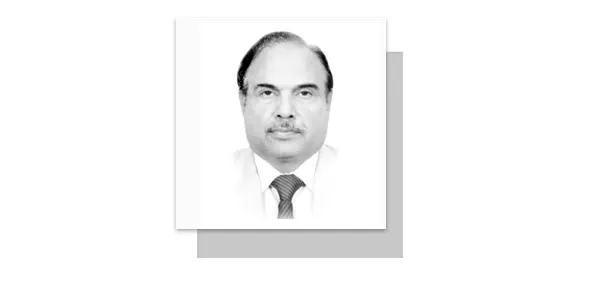ONE year ago, Army Chief General Syed Asim Munir visited Karachi and delivered a speech to a business community grappling with deep economic uncertainty. In 2023, as the country faced rampant inflation, currency depreciation and an overall economic downturn, General Munir’s words struck a chord. His message was one of resilience, acknowledging the undeniable challenges but urging against hopelessness. It was a blend of pragmatism and optimism, offering the business community a vision of recovery while reassuring them that the nation’s economic indicators would soon shift towards stability. He called for patience, reminding them that with Allah’s help, Pakistan would weather its difficulties and together they would steer the economy back on course.
At the time, General Munir’s address might have been seen as an encouraging, yet perhaps conventional, appeal for calm. Pakistan’s economic struggles were severe and the promises made seemed almost aspirational. But as we fast-forward one year, the question arises: Have those promises been fulfilled? Has there been a tangible shift in the country’s economic fortunes, or have the challenges simply evolved? His call for the business community to invest within Pakistan, rather than seeking foreign opportunities, was a clear and bold directive. He again urged local investors on Friday to continue trusting the country’s potential, suggesting that economic revival required a collective effort, with domestic investment playing a crucial role in stabilising and growing the economy. It’s prudent to examine how Pakistan has fared on the economic front during the last one year. Have the economic indicators shifted as promised? How have macro-economic indicators changed between June and September 2024?
Macroeconomic indicators provide a broad overview of an economy’s health and performance. In Pakistan’s case, examining these indicators between June 2023 and September 2024 reveals a significant positive shift in its economic landscape. The sources consistently highlight improvements across various sectors, indicating a trend of recovery and stabilization within this time-frame. GDP Growth: The most prominent indicator of this positive trajectory is the surge in GDP growth, from a meagre 0.29% to an estimated 2.38%. This signifies a revival in Pakistan’s economic output and is further strengthened by projections indicating a continued growth of 3.9% for 2025.
Trade & Investment: The sources depict a more favourable trade environment, with the trade deficit shrinking from $27.47 billion to $24.09 billion. This improvement is bolstered by an increase in exports, notably in agricultural products, which rose from $4.7 billion to $7.1 billion. The slight growth in FDI from $1.63 billion to $1.9 billion, while not as substantial, further indicates growing confidence in Pakistan’s economy. Inflation and Monetary Policy: The most dramatic shift is observed in the sharp decline in inflation from a concerning 38% to a much more manageable 9.6%. This drastic reduction indicates successful efforts in controlling inflation and promoting price stability. Complementing this positive trend is the decrease in the policy rate from 22% to 17.5%, suggesting efforts to stimulate economic activity by making borrowing more accessible. Further strengthening this notion is the appreciation of the Pakistani Rupee against the US dollar, moving from Rs 333.5/$ to Rs 278/$. This appreciation can be attributed to improved economic sentiment and potentially increased foreign investment.
External Sector: Pakistan’s external sector also exhibits signs of improvement. The current account deficit, a crucial indicator of a nation’s financial health, shrunk significantly from -$2.55 billion to -$0.68 billion. This improvement is supported by the growth in remittances, reaching $30.2 billion from $27.3 billion and a considerable surge in inflows from the Roshan Digital Account (RDA), rising from $1.96 billion to $8.58 billion. The substantial increase in the State Bank of Pakistan’s forex reserves, from $4.4 billion to $9.47 billion, further underlines this positive trend. These figures collectively point towards a healthier external sector and improved foreign currency reserves. Beyond the numbers: The positive shift in these indicators is further corroborated by notable improvements across specific sectors and positive market sentiment. The IT sector’s growth, reflected in the rise of IT exports from $2.6 billion to $3.2 billion, is particularly noteworthy. A significant jump in tax collection from Rs 7.1 trillion to Rs 9.3 trillion indicates improvements in government revenue generation.—To be continued.
—The writer is former Secretary Election Commission of Pakistan and currently Chairman National Democratic Foundation.










